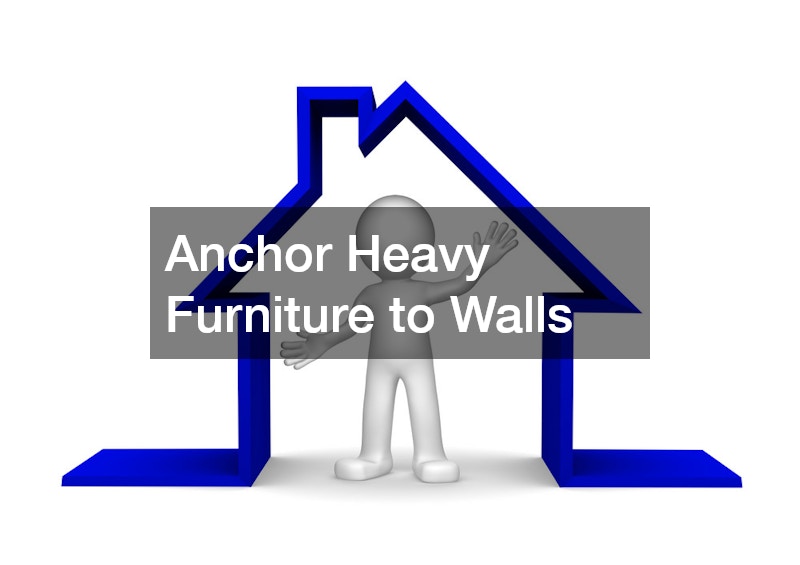
Keeping your home safe requires more than just locking your doors at night. It means creating an environment where your family feels protected from accidents, intrusions, and environmental hazards. From proper fire prevention methods to storm preparedness and equipment upkeep, adopting a proactive mindset can make a major difference. Whether you’re a homeowner or a renter, incorporating consistent safety practices will help reduce your risk and improve peace of mind.
There are countless safety tips for the home that range from simple to more advanced, but they all share the same goal: preventing harm and preserving what matters most. Taking steps to secure appliances, check alarms, and prepare for emergencies doesn’t have to be complicated. It only takes a few small upgrades to significantly increase your home’s safety. In this blog, we’ll walk through several strategies you can adopt now to strengthen your household’s safety profile, starting with a few foundational updates and tools.
Install and Maintain Smoke Detectors
Smoke detectors are one of the most essential components of any home safety system. These devices offer early warnings in the event of a fire, potentially saving lives and preventing catastrophic property damage. Regularly testing your smoke detectors and changing the batteries at least once a year is a vital part of any safety checklist. Ideally, there should be a smoke detector in every bedroom, outside sleeping areas, and on every level of the home.
In addition to basic battery-operated models, modern options offer smart features like app alerts or integration with your home security system. Consider pairing your fire safety upgrades with a 5 point security door, which can provide an additional layer of protection in case of emergency evacuation. Combining updated smoke detectors with reinforced entryways is one of the most effective safety tips for the home, especially for families with young children or elderly residents. Be sure to test each unit monthly and vacuum around the detectors to remove any accumulated dust that might interfere with sensors. It’s also a good idea to keep a fire extinguisher on each floor for added peace of mind.
Use Surge Protectors for Electronics

Electricity is an everyday convenience, but it also presents risks—especially during storms or power surges. Unstable voltage can fry your electronics, damage appliances, and even spark fires. Using surge protectors is a simple yet highly effective way to protect your home’s devices and wiring. These small tools absorb excess energy and prevent it from reaching your most sensitive electronics.
Beyond basic plug-in protectors, consider upgrading to surge-protecting power strips in key areas of the home. If your entryways include modern features like entry door glass with electronic components, they may also benefit from surge protection to avoid potential electrical issues. Building safety into both your electrical use and structural features is one of the most underrated safety tips for the home—but it can have major long-term benefits. You can even install whole-home surge protectors at your electrical panel for broader defense. Be mindful of where you place surge protectors—avoid overloading outlets and never daisy-chain power strips.
Keep Walkways Clear of Clutter
A clutter-free home is a safer home. Tripping hazards such as shoes, toys, or tangled cords can lead to falls, especially for young children or elderly individuals. Keeping walkways open and well-lit reduces the risk of accidents and helps ensure that exits remain accessible during emergencies. This principle applies to both indoor and outdoor pathways, where debris and uneven surfaces can present similar dangers.
Seasonal safety tips for the home should also include attention to items stored near heat sources. For example, households that use propane for heating or cooking must be especially mindful of clear paths and proper ventilation. Keeping flammable objects away from gas appliances and maintaining a clutter-free environment around them is essential for reducing fire hazards. Also consider using non-slip rugs and adding motion-sensor lights in hallways or stairwells to improve visibility. Even small improvements like keeping your entry area free of packages or umbrellas can prevent falls and improve safety for guests.
Store Cleaning Supplies Securely
Household cleaning products often contain harsh chemicals that can be dangerous when improperly stored. It’s important to keep these supplies locked away or placed on high shelves out of reach of children and pets. Even everyday items like bleach, ammonia, and detergent pods can cause serious harm if ingested or mishandled. Labeling bottles clearly and avoiding mixing chemicals further enhances your home’s safety.
If you live in an area prone to severe storms, pay special attention to how and where these chemicals are stored. Securing them behind the protection of a durable hurricane door can help prevent spills during high winds or flooding. As part of your seasonal safety tips for the home, check storage cabinets regularly to ensure they’re properly sealed and away from heat or moisture. Install childproof latches in low cabinets, especially in kitchens and laundry rooms. Ventilated cabinets or dedicated cleaning closets are also worth considering, especially if your home has limited space.
Anchor Heavy Furniture to Walls

Heavy furniture like bookshelves, dressers, and TVs can tip over unexpectedly—especially if children attempt to climb them. Anchoring furniture to walls is a smart way to prevent these types of accidents. Anti-tip kits are inexpensive and widely available, making this a cost-effective and critical safety upgrade. This tip is especially important in multi-level homes and nurseries.
In states with extreme weather, anchored furniture can also reduce the likelihood of damage during storms or flooding. If your home includes a florida enclosure, it’s wise to assess how wind or shifting structures might affect larger furnishings. Integrating furniture anchoring into your list of safety tips for the home enhances stability and reduces the chance of injury or damage, particularly in high-risk environments. Anchor not just shelving units but also TV stands and taller dressers. And don’t forget to secure furniture in basements or garages, which are often overlooked in safety planning.
Test Carbon Monoxide Alarms Regularly
Carbon monoxide (CO) is a silent, invisible threat that can become deadly without warning. CO alarms detect this odorless gas and provide alerts before levels become dangerous. It’s essential to place alarms near sleeping areas and on every floor, especially near fuel-burning appliances like furnaces and water heaters. Regular testing and battery replacement are key to keeping these devices functional.
While checking your CO alarms, also inspect nearby appliances and utility connections for leaks or wear. If you suspect a malfunction, scheduling appliance repair quickly is one of the smartest safety tips for the home. A faulty gas dryer or oven can release CO into the air without any obvious signs. By staying on top of appliance maintenance and alarm functionality, you can protect your household from one of the most insidious hazards.
Secure Windows and Entry Points
Securing your windows and doors is a fundamental step in protecting your home against break-ins and weather damage. Reinforced locks, window bars, and shatter-resistant glass can help deter intruders while improving storm resistance. If you leave your home frequently or live in a high-traffic area, these measures are especially important for peace of mind.
For homes with a lot of direct sunlight, window coverings can also serve dual purposes. Working with a local sun shade company may help you install screens or shades that block harmful UV rays while adding another layer of privacy and security. These upgrades are not only energy-efficient but also fall under practical safety tips for the home, as they can reduce overheating, glare, and the potential for window breakage during extreme heat.
Create a Fire Escape Plan
Every household should have a fire escape plan in place—and practice it regularly. Knowing exactly how to exit your home quickly in case of fire is critical, especially during nighttime hours or when children are present. Identify at least two exits for every room, designate a safe meeting spot outside, and walk through the route with all household members.
Special materials can help reduce risk and improve fire response time. For example, some homes benefit from fire-retardant insulation or specialized products like polyurethane foam fabrication that offer both structural and safety advantages. Including these materials in your home construction or remodeling plan complements your emergency strategy. Of all the safety tips for the home, having a practiced plan can make the biggest difference when seconds count.
Set Water Heater to a Safe Temperature
Scalding injuries are more common than many realize, particularly in homes with young children or elderly individuals. To prevent burns, the water heater should be set no higher than 120°F (49°C). This temperature is hot enough for typical household use while reducing the risk of skin damage from accidental exposure to overheated water.
In addition to adjusting the temperature, routine plumbing system maintenance helps keep water systems safe and reliable. Scheduling local septic pumping ensures that your home’s wastewater system is working properly and reduces the chance of backups that could affect water temperature regulation. Including plumbing checks on your list of safety tips for the home promotes overall hygiene and minimizes hazards connected to water-related systems.
Keep Emergency Contacts Visible and Updated

In times of crisis, quick access to essential phone numbers can be lifesaving. Post emergency contacts in a central location, such as on the refrigerator or a family command center, and save them in your cell phone for redundancy. Include numbers for local fire, police, poison control, and any household doctors or specialists. Review and update the list every few months.
If you live in an area with seasonal weather threats or aging infrastructure, you’ll also want to include contractors you can count on. Having the number of local roofers handy can be critical after a storm or accident, especially if structural damage occurs. These planning steps are small but powerful additions to your safety tips for the home, allowing for faster decision-making and reduced chaos during emergencies.
A safe home doesn’t happen by chance—it’s the result of intentional habits, thoughtful upgrades, and regular maintenance. From setting water heater temperatures to planning fire escapes and anchoring furniture, the best safety tips for the home are ones that work proactively to reduce risk. Making these updates doesn’t require a massive renovation; instead, it’s about identifying small actions that together create a secure environment for every member of your household.
Prioritizing safety is an ongoing process. Whether you’re investing in secure doors, maintaining carbon monoxide alarms, or hiring local professionals to help with repairs, each step adds a layer of protection. The most effective safety strategies consider the specific needs of your space and the people who live there. With a few practical changes and ongoing attention, your home can become a place where comfort and safety go hand in hand. Let these tips be the start of a safer, more resilient way of living.
When thinking about long-term safety, it’s also wise to conduct seasonal inspections. Changes in weather often expose weaknesses in your home’s exterior or interior systems. For example, checking for loose shingles before storm season or ensuring that all vents are unobstructed before winter can prevent costly emergencies. Creating a home maintenance calendar with monthly or quarterly tasks helps you stay organized and focused throughout the year.
Another valuable approach is to involve the entire household in your safety efforts. Teaching children how to respond to fire alarms, where to meet during an emergency, or when to call for help builds confidence and preparedness. Even small habits—like locking the door when leaving a room or turning off appliances after use—contribute to a safer home when practiced consistently.
Above all, safety should be viewed as a lifestyle, not a checklist. Every upgrade or routine you implement—no matter how minor it seems—moves your household one step closer to security and peace of mind. By treating these safety tips for the home as part of your everyday routine, you create a strong foundation that protects the people and spaces you care about most. Your future self—and your family—will thank you.


